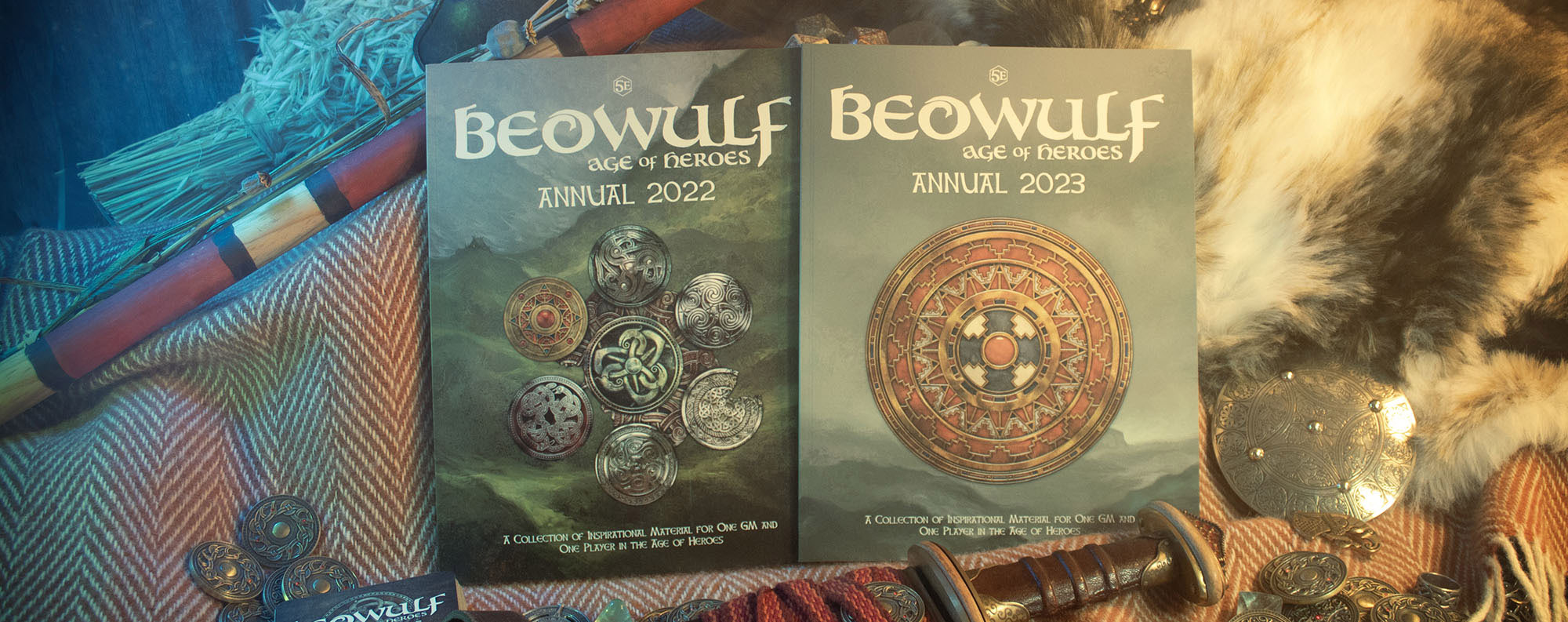Today we are looking at the Monsters section of the BEOWULF: Age of Heroes rulebook. This is the last chapter before the Appendices but it’s a big one so we might split it apart.
The first section discusses the subject of enemies is general, including the distinction beteen foes and monsters. In the BEOWULF rules, Monsters with a capital-M are special. They have a feature, Undefeatable, that helps keep them alive until the Hero uses a special weapon, technique or special action that does standard damage to them. This makes Monsters unique in the game and rewards players for social encounters or investigations. A player that pushes past those components of the game in order to roll dice in combat will not be very successful. This is a reflection of the poem… think of Beowulf’s intuition to fight Grendel hand-to-hand and his seeking out of the only magic sword that can defeat his mother.

We use “foes” to distinguish between Undefeatable Monsters and ordinary enemies. Over the course of an adventure you will likely encounter both but you can always distinguish between the two. Opposite from Monsters, foes have the Defeatable feature, giving a condition or action that allows the Hero to defeat an enemy without slaying them to last foe standing. Once an enemy is Defeated, they stay Defeated – no trickery or take-backs here!
To keep things thematic, many Monsters and Foes use Old English names, often given with a modern English equivalent. When we can, we’ve used a name available in the poem or another similar source. We we could not, we’ve used available OE words or phrases to give you a name that a scop retelling the story might have used. As with other ‘historical’ materials such things are open to interpretation. Any names given in the poem are often used as synonyms for the three Monsters that do appear. We’ve followed the long-standing roleplay tradition of being fairly literal in our interpretations so as to present a wider variety of threats.
Like other rule bits, Monsters and foes have burdens and gifts. Each entry lists a collection of these, so that you as Gamemaster can adjust the difficulty higher or lower as is best for your Hero. This also means that not every Dréag (Revenant) has the same features or weaknesses. Speaking of gifts, many Monsters have features that make use of inspiration (remember that the portent generates a pool of inspiration tokens for Monsters to use).
The first category is Ceorlcund (human-like creatures). This includes things like one-human Sorcerors and Fury-witches and humanoids like Wulvers (dog-headed people) and Screamers (remnants of earlier folk, now with potential mystical ties to the earth and the cycle of life and death).
The second category are Dēofols (fiends). We have night-demons and shadow-walkers in this category. As you might expect, these creatures are often Monsters and tend toward middle or higher challenge ratings. It is an unlucky starting Hero that encounters one of these in their early career.
Last (for today) are the Eotenas (ogres and trolls). Ogres tend to be a bit smarter, trolls a bit tougher. Both have a large array of burdens and gifts (especially gifts) that can make them more formidable opponents. Ogres are, unsurprisingly, featured in The Three Ogre Brothers example adventure.
Next time, more monsters!
Learn more about BEOWULF: Age of Heroes

